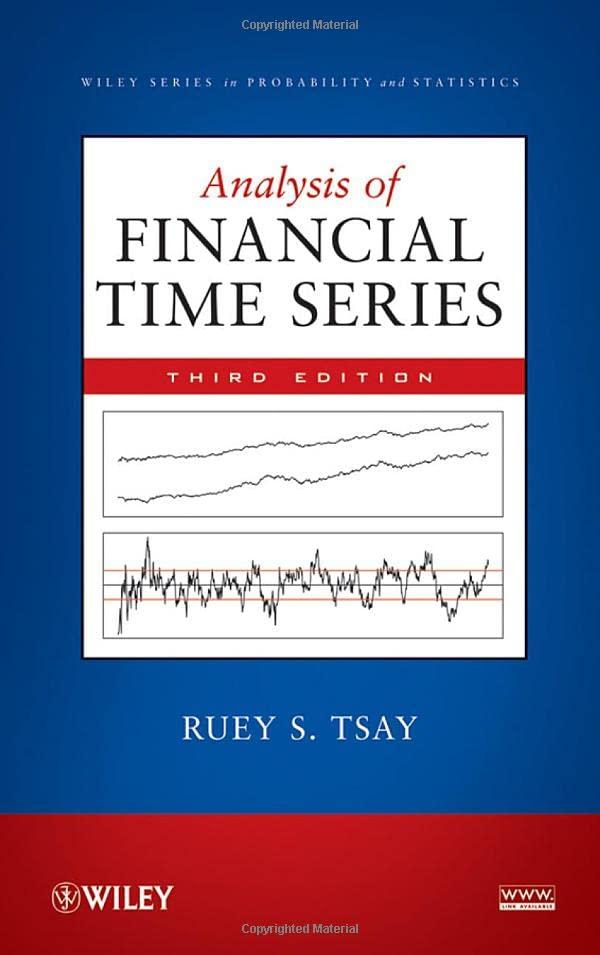The bivariate AR(4) model (boldsymbol{x}_{t}-boldsymbol{Phi}_{4} boldsymbol{x}_{t-4}=boldsymbol{phi}_{0}+boldsymbol{a}_{t}) is a special seasonal model with periodicity 4 , where (left{boldsymbol{a}_{t}
Question:
The bivariate AR(4) model \(\boldsymbol{x}_{t}-\boldsymbol{\Phi}_{4} \boldsymbol{x}_{t-4}=\boldsymbol{\phi}_{0}+\boldsymbol{a}_{t}\) is a special seasonal model with periodicity 4 , where \(\left\{\boldsymbol{a}_{t}\right\}\) is a sequence of independent and identically distributed normal random vectors with mean zero and covariance matrix \(\boldsymbol{\Sigma}\). Such a seasonal model may be useful in studying quarterly earnings of a company.
(a) Assume that \(\boldsymbol{x}_{t}\) is weakly stationary. Derive the mean vector and covariance matrix of \(\boldsymbol{x}_{t}\).
(b) Derive the necessary and sufficient condition of weak stationarity for \(\boldsymbol{x}_{t}\).
(c) Show that \(\boldsymbol{\Gamma}_{\ell}=\boldsymbol{\Phi}_{4} \boldsymbol{\Gamma}_{\ell-4}\) for \(\ell>0\), where \(\boldsymbol{\Gamma}_{\ell}\) is the lag- \(\ell\) autocovariance matrix of \(\boldsymbol{x}_{t}\).
Step by Step Answer:






